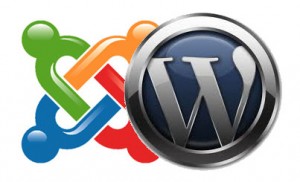Once upon a time nobody cared about Content Management Systems or “CMS” but back in the late 90s and early 00’s there was a modular framework called Mambo that did something similar. Back then, before “blogging” was adopted into the general lexicon Mambo was a “portal” based on the then-popular slashdot.org website. Essentially it was a news feed with comments and some plugins.
In 2005 the codebase for mambo forked into Joomla which professed to be truly open source and quickly became the most popular CMS in the world. I used it back then, and it was impressive. It handled everything you’d expect from a modern CMS and had a vibrant community of developers that extended what you could do with it.

What I liked was the ability to roll your own templates in order to make a site that looks nothing like a “Joomla” site, unlike Mambo where every site you made looked more or less, like slashdot.
Meanwhile a small blogging framework called WordPress was maturing. Unlike the broad and extensible Joomla, WordPress focussed on being a good blog. It did this so well, it soon became the most popular blogging framework available. In 2008, the new dashboard and widget system allowed a much greater scope for developers to extend it’s functionality.
I loved Joomla, for a while. I built many sites and shops with it, but it had quirks. They were quirks I assumed would go away over time but they didn’t. It was developed and maintained by volunteers but some of them were sloppy and a lot of code generated by the core would insert in-line CSS or hardcoded HTML elements that you could’t override without “hacking the core” CMS code. This meant upgrading the Joomla version would wipe out your “fixes”.
At the same time, I had a few wordpress blogs I’d created templates for. It had no such problems. The code was clean and minimal and elegant. Also, upgrading was, for the most part, a click-and-play type experience. Upgrading Joomla, especially when loaded with extensions, was always a compatibility nightmare.
The nightmare grew into full blown night terrors when Joomla 1.5 was released. Joomla 1.0 sites were being defaced because of the sloppy code and extensions, so upgrading was essential but it had an ever so slightly different templating system so you had to recode your designs. That would’ve been forgivable except the next major release 1.7 broke the templates… again! Then version 2.5 rolls around and it’s a complete rewrite, breaking all previous efforts with plugins and templates. The upgrade path has been, well, insane.
In that time, when considering the options for clients and looking at the roadmap for Joomla it was clear that developing for it would require a commitment to redevelopment later. We started making the switch over to WordPress for bigger sites that were not just blogs. What we found through experience was :
- Clients like wordpress’ dashboard and editor better
- Developers like the template system better (Once they understood it)
- The Posts / Pages framework is all that is required for about 95% of clients
- The Use of Custom Fields + WordPress Loops make it easy to create “mini-database” style applications for customers, e.g. event management, catalogs, product pages, podcasts etc.
- The WordPress upgrade path is easy and not prone to breaking prior work
- The sites are generally more secure (but probably because upgrading is easier, and therefore more likely to occur).
- The dev community has since eclipsed Joomla and a wide range of commercial plugins are available, especially for eCommerce.
Ultimately it was WordPress’ simplicity that has convinced me that it is a better framework. The code is clean and the UI is basic but small details have been considered. Instead of trying to do everything, it does a simple thing very well – publishing content. It doesn’t have the complex menu systems or multi-level content taxonomy of Joomla out of the box, but most people don’t need that. Those that do are easily accommodated with some basic setup work.
DNA Digital now promotes WordPress by default to clients but it’s important to remember that it too, is free and open source. It’s possible things will change like they did with Joomla and code/team fragmentation will creep in. For now though, my money’s on WordPress.
3 Comments.
Nice post Dylan. I’ve never touched WordPress, but have slowly realised over the last few years that it isn’t me that’s nuts… It’s Joomla. I’ll give WP a test drive next time I have to knock up a simple site!
Thanks Jay. Glad I could help ease your mind.. it’s definitely not just you! The wordpress template system seems weird at first but is just as versatile as Joomla’s. If you need a hand with anything just let me know!
Spot on – wordpress rocks! 😉